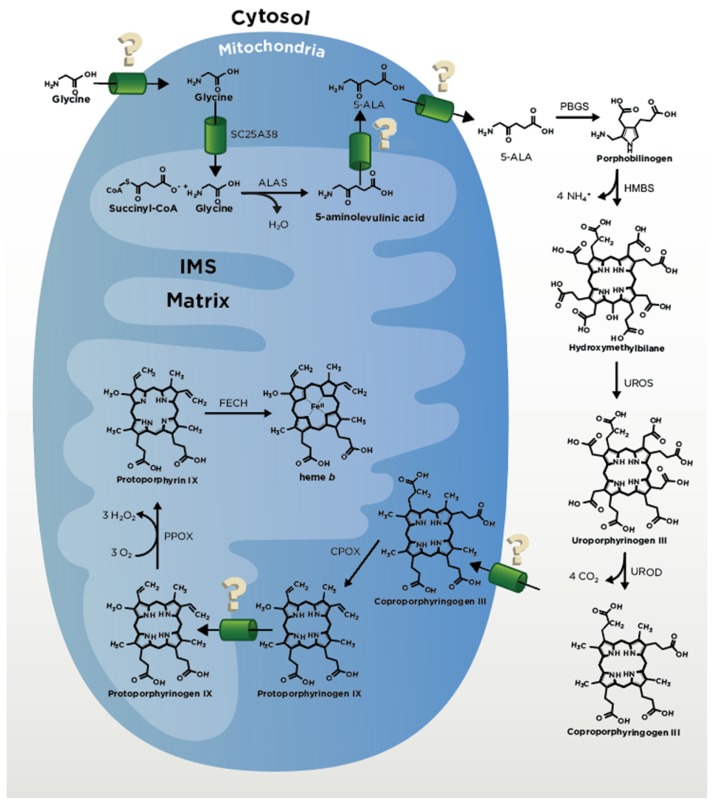Figure 2.
Structures and enzymes involved in heme synthesis shown where they are localized. Glycine is transported into the intermembrane space of the mitochondria (IMS) through an unknown mechanism and is transported across the inner mitochondrial membrane (IMM) by SLC25A38. Succinyl-CoA is synthesized within the matrix. Glycine and Succinyl-CoA are condensed into 5-aminolevulunic acid (5-ALA) by ALA synthase (ALAS). The 5-ALA is transported from the matrix to the cytosol by unknown mechanisms, where Porphobilinogen synthase (PBGS) condensates two molecules of ALA into porphobilinogen (PBG). Four molecules of PBG are combined to form a linear tetrapyrrole hydroxymethylbilane (HMB) by hydroxymethylbilane synthase (HMBS). Uroporphyrinogen III (UPgen III) is synthesized from HMB by uroporphyrinogen synthase (UROS). Coproporphyrinogen III (CPgenIII) is synthesized from UPG III by uroporphyrinogen decarboxylase (UROD). CPgenIII is transported by an unknown mechanism into the IMS. Within the IMS CPgenIII is made into protoporphyrinogen IX (PPgen IX) through catalysis by CPgen oxidase (CPOX). Next, PPgen IX is oxidized into protoporphyrin IX (PPIX) by PPgen oxidase (PPOX). For the final step PPIX is transported into the matrix, where ferrochelatase (FECH) catalyzes the insertion of ferrous iron into the porphyrin ring, resulting in heme b.

